How to create a new paragraph with blökkli
The blökkli starterkit already comes with a pre-configured set of paragraphs and Vue components.
In this tutorial, we will walk through the steps needed, in order to create a new paragraph / vue component for blökkli.
1. Create Paragraph type
Go to admin/structure/paragraphs_type/add
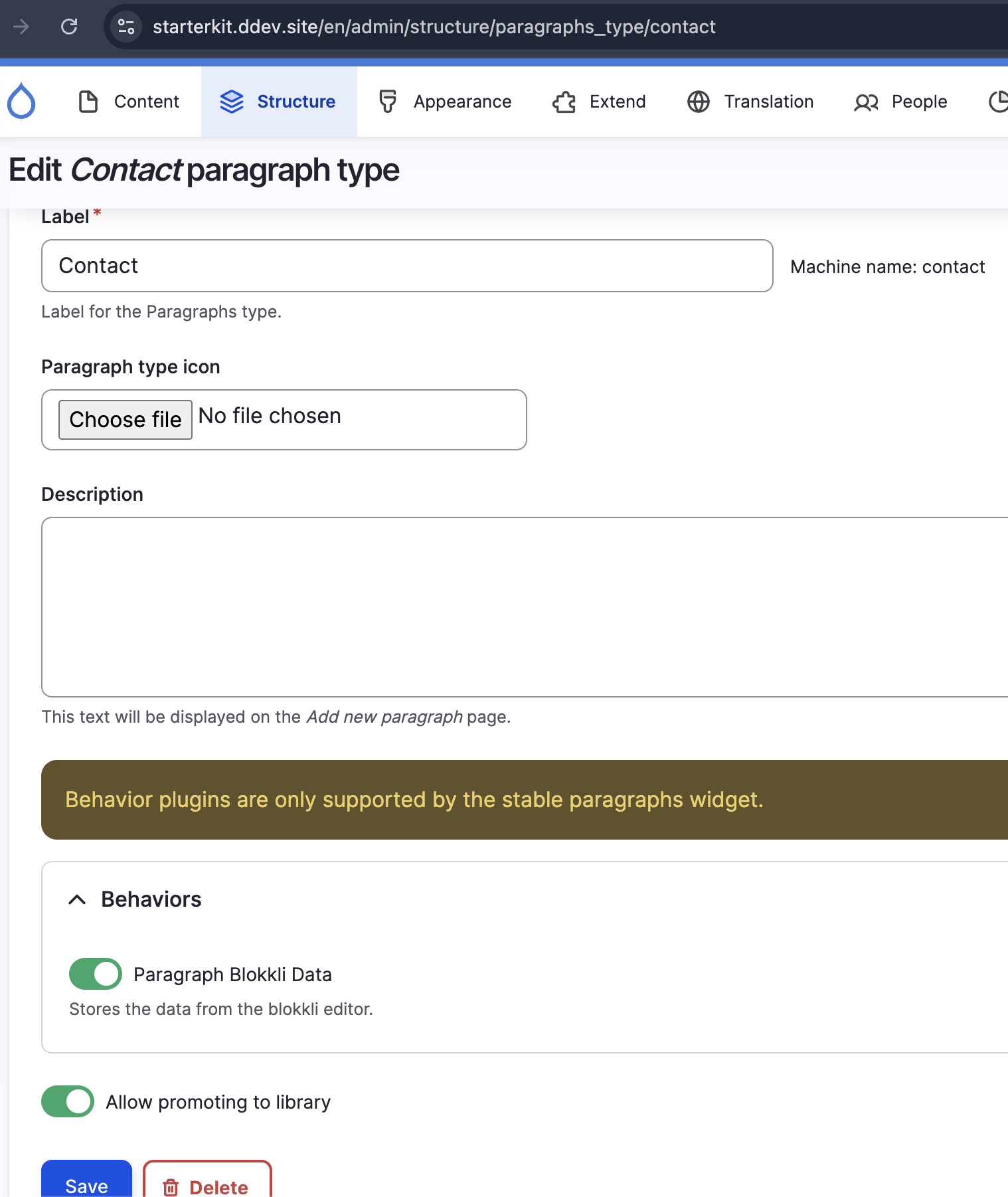
2. Enable Paragraph
Make sure, the paragraph type is allowed for the desired content or entity page
Go to admin/structure/types/manage/page/fields/node.page.field_paragraphs
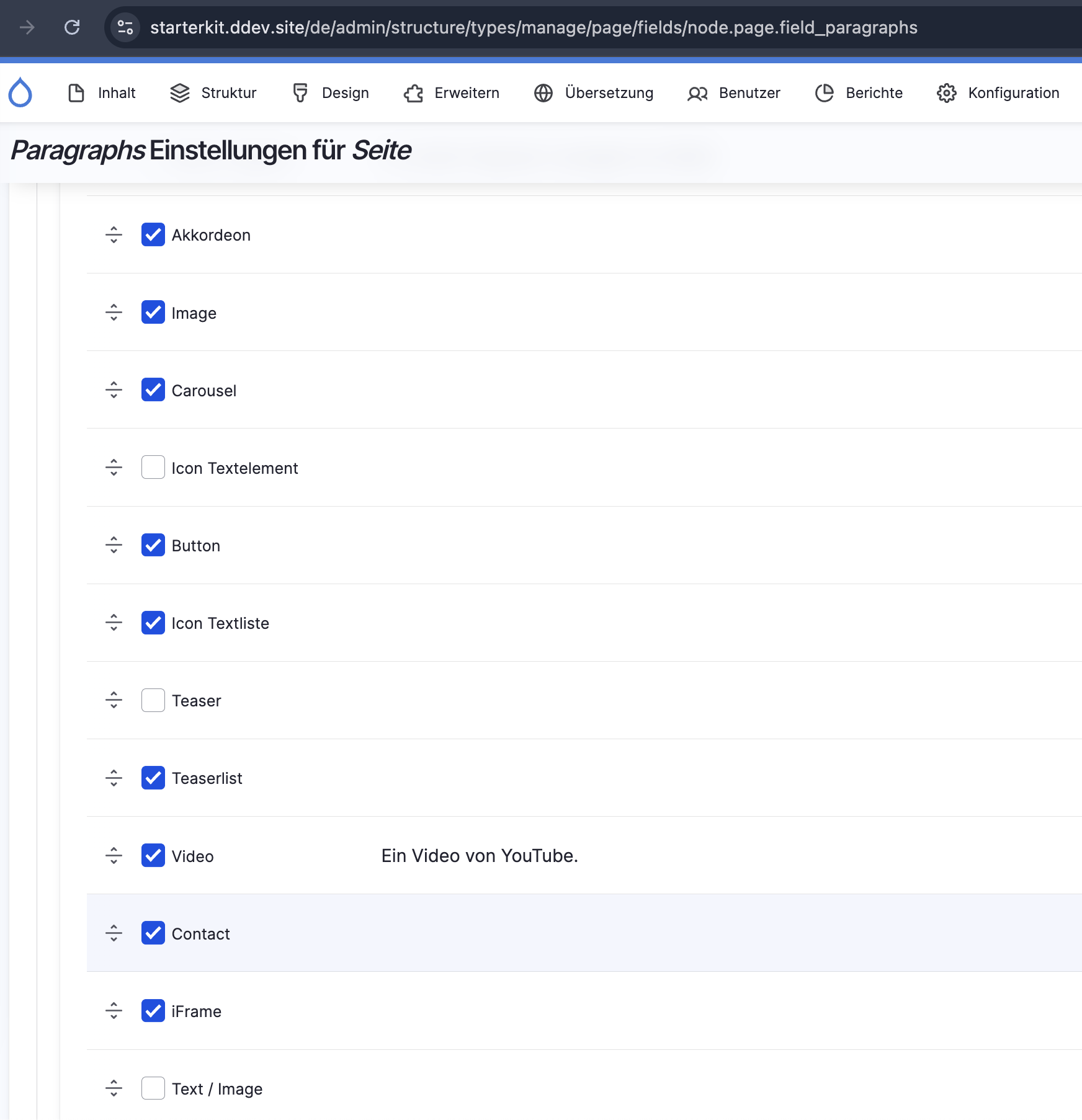
Note, you can also manage the allowed paragraphs for all entity types.
You can do so at the following blökkli configuration page: admin/config/content/blokkli/allowed-paragraphs
3. Expose data in GraphQL
As the setup is based on the GraphQL Core Schema module, we want to opt-in for any new data that should be exposed through the GraphQL API.
Go to admin/config/graphql/servers/manage/graphql
- expose any newly added Paragraph fields
- expose the new paragraph bundle
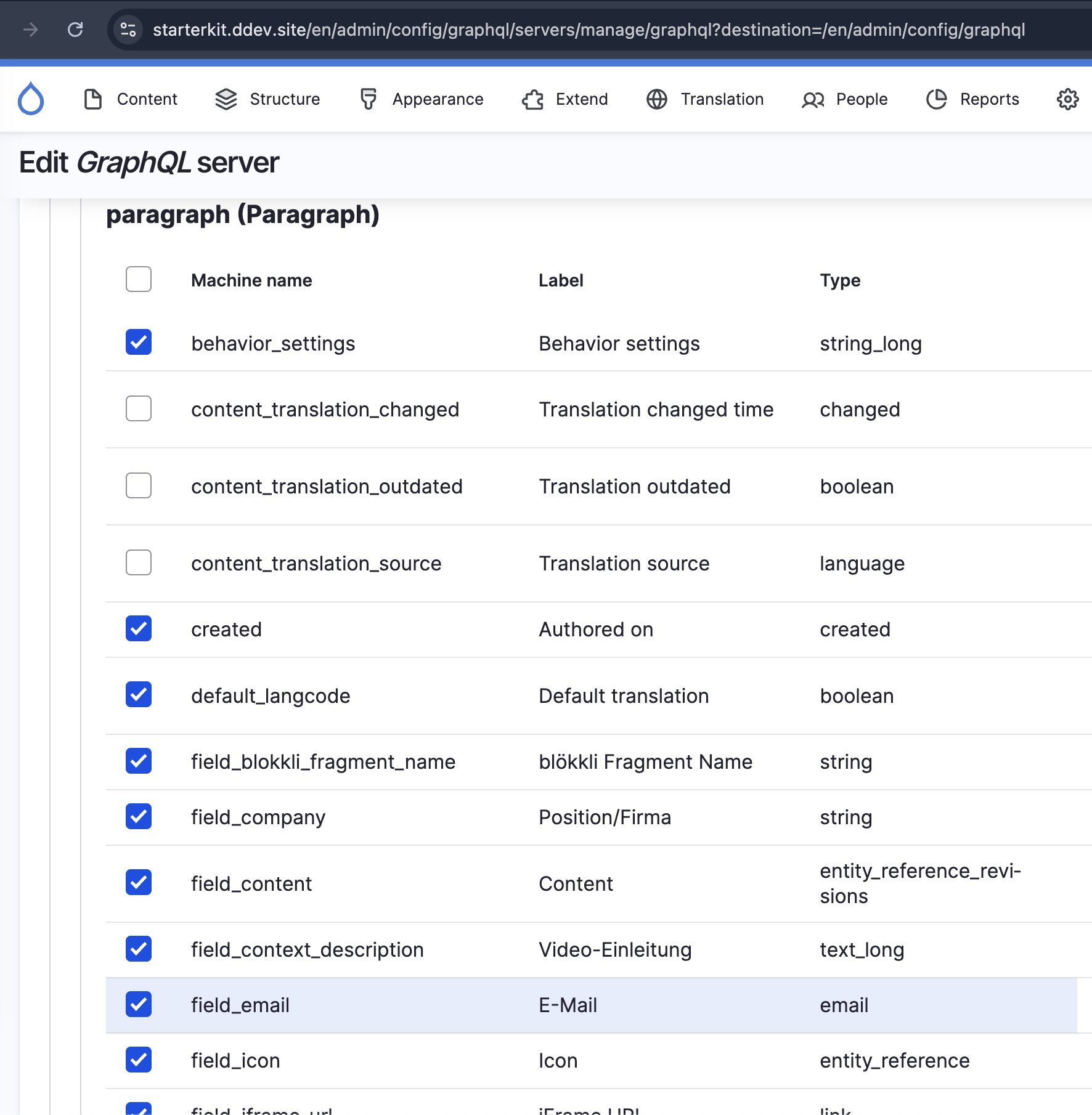
Also see the following page on further infromation: https://blokkli-starterkit.netlify.app/drupal/graphql-introduction
4. Clear cache
In order to make sure, that the exposed GraphQL data is updated, you need to clear cache.
5. Verify data
Let's use the GraphQL Voyager to verify the data structure.
Go to admin/config/graphql/servers/manage/graphql/explorer
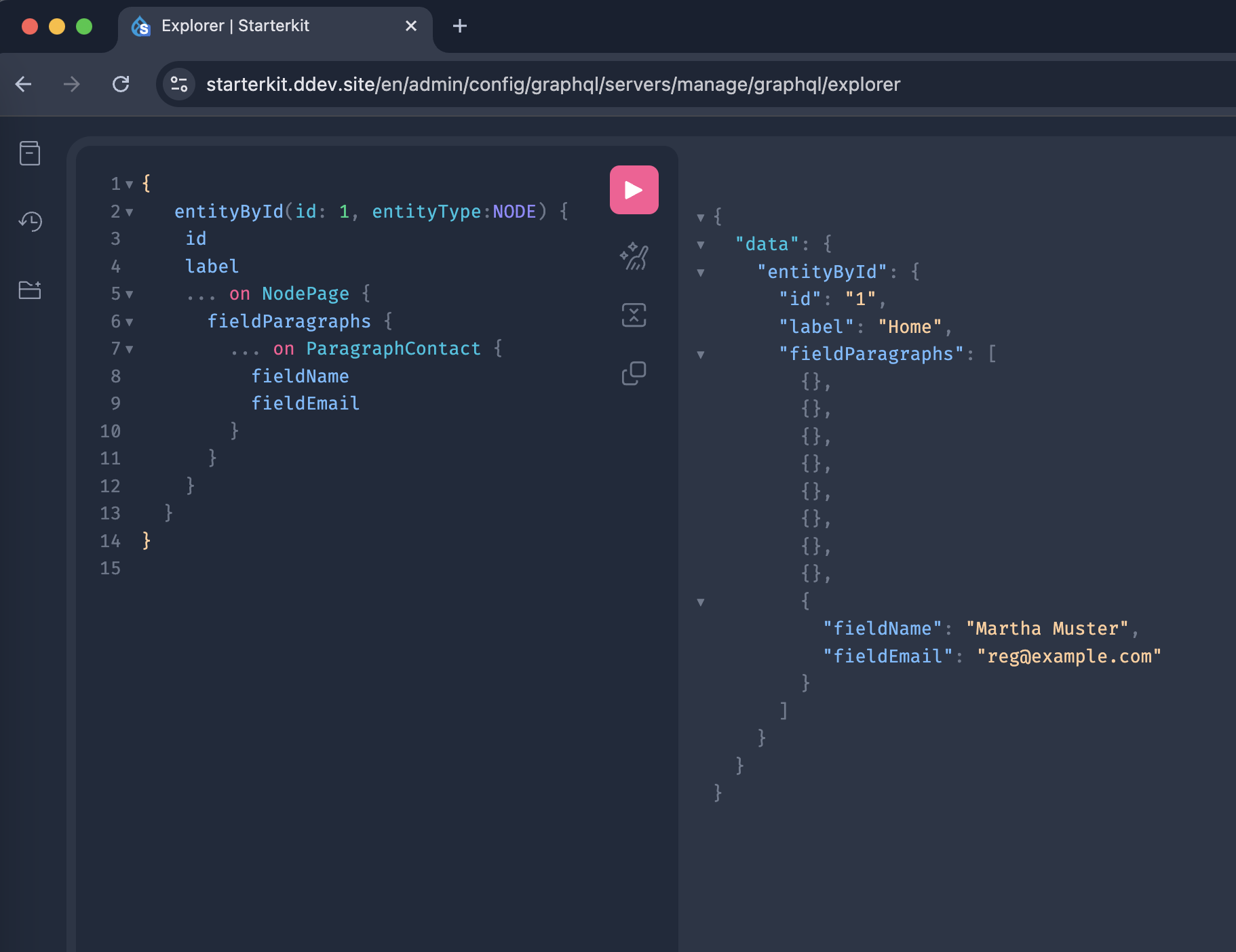
6. Create the vue component
In the frontend, we want a Vue component that corresponds to the paragraph being served from the backend. For this procedure, three steps are needed:
First, we create a GraphQL fragment for the paragraph
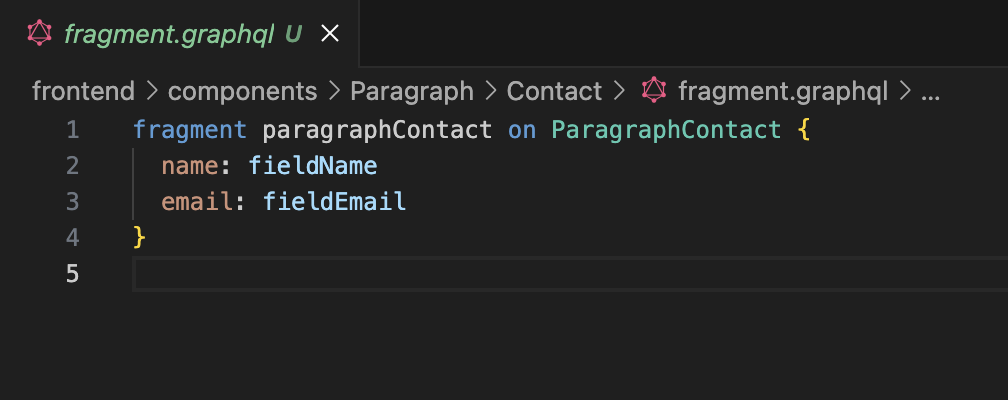
Second, we create a Vue component for the paragraph
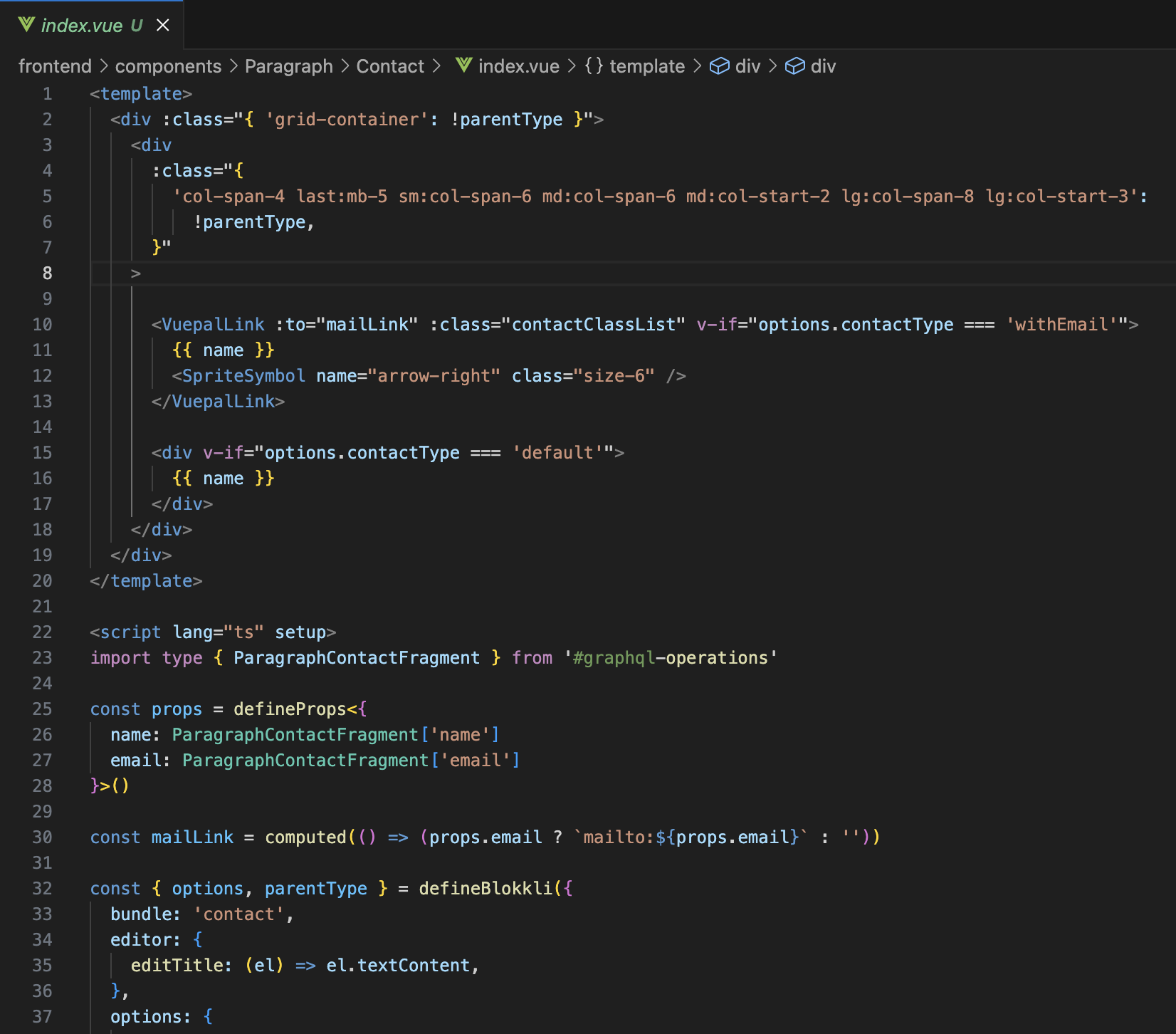
Third, we register the new Paragraph fragment in the fragment that contains all paragraphs
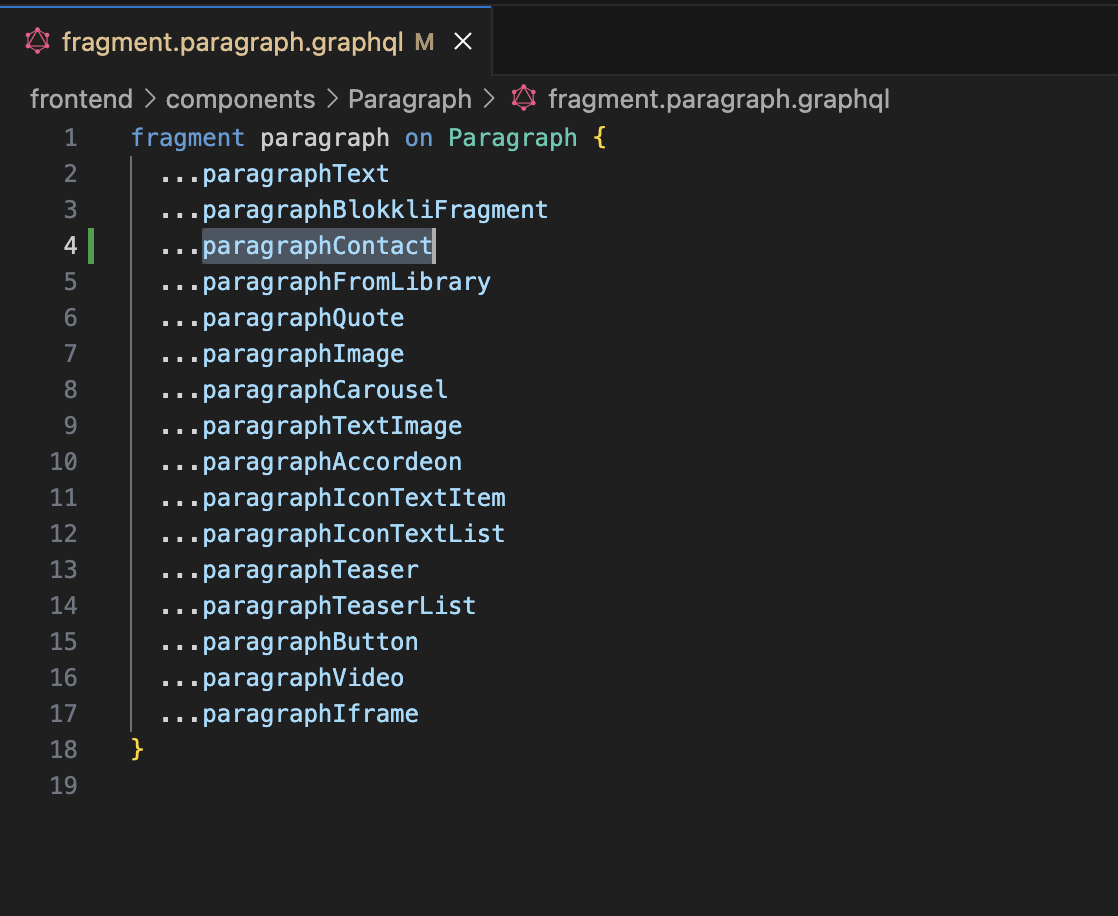
Check out the existing examples: https://git.drupalcode.org/project/blokkli_starterkit/-/tree/1.0.x/frontend/components/Paragraph
7. Restart the frontend
In order to work with the new paragraph, we need to restart the frontend.
If you started the frontend already, stop it first. Then
ddev frontend
8. See your new component in action
Visit the site and see your new component in action